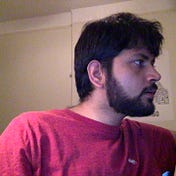
LinkedIn — shorturl.at/sI289 ; Other blog — https://bit.ly/3AVJ1rE ; Interested in science, maths, startup, and films. Management consultant and data scientist

LinkedIn — shorturl.at/sI289 ; Other blog — https://bit.ly/3AVJ1rE ; Interested in science, maths, startup, and films. Management consultant and data scientist